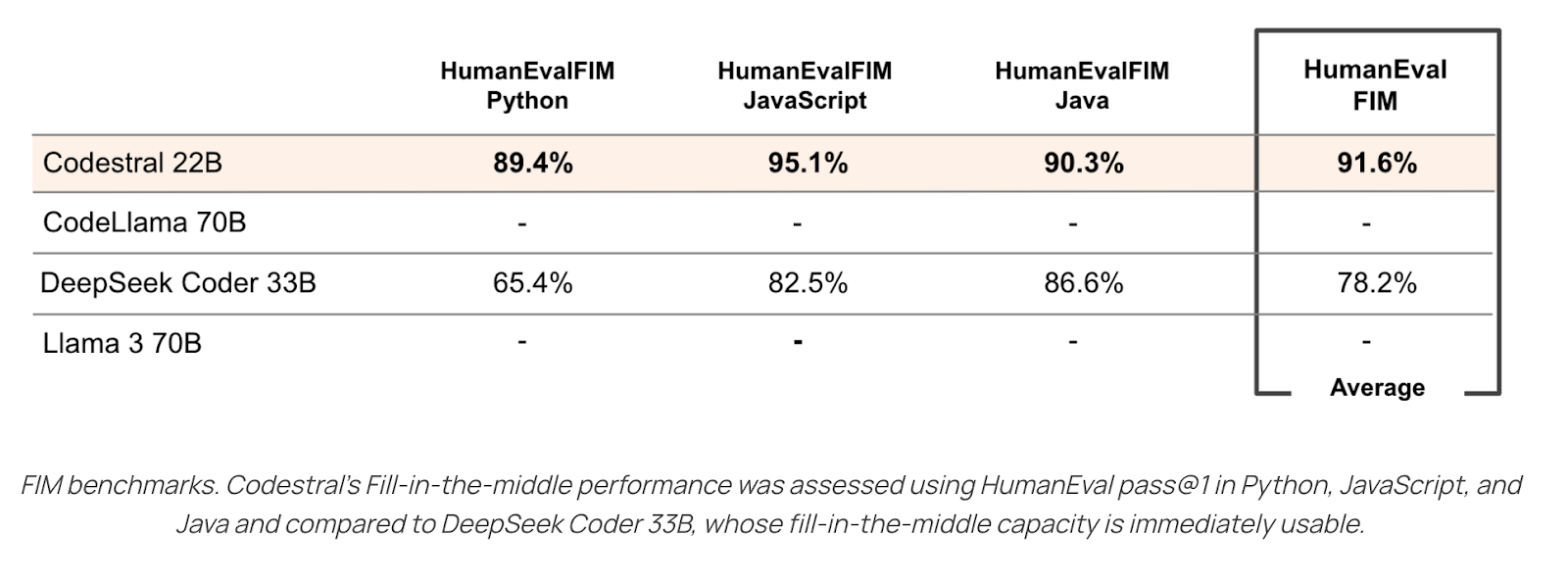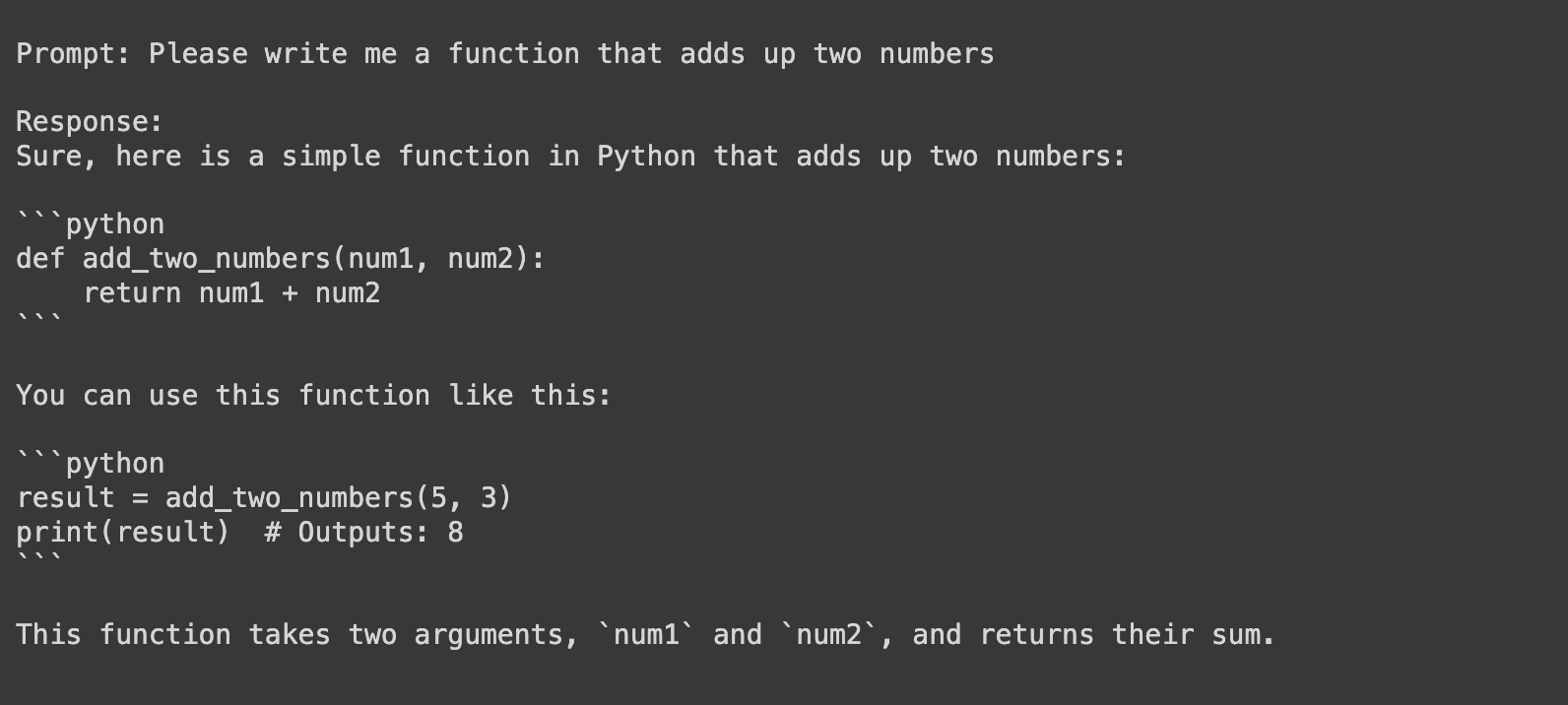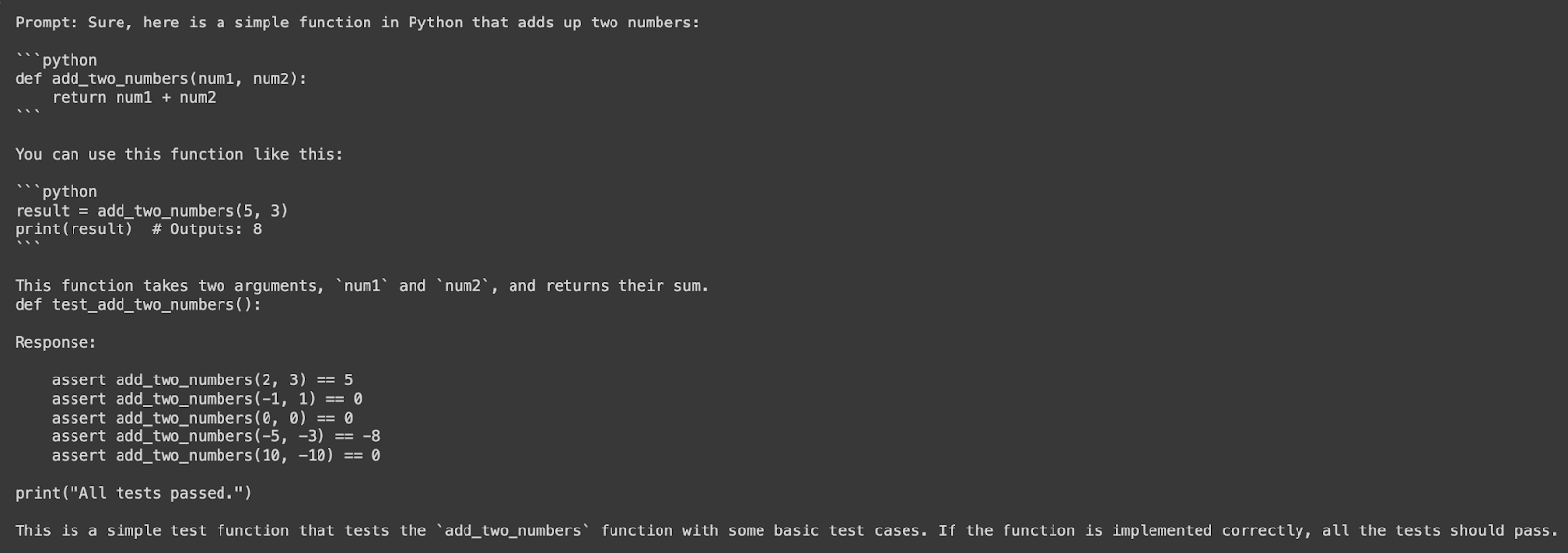course
What is Mistral's Codestral? Key Features, Use Cases, and Limitations
Codestral is Mistral AI's first open-weight generative AI model designed for code generation tasks, automating code completion, generation, and testing across multiple languages.
May 2024 · 8 min read
Is Codestral available for commercial use?
Can Codestral be fine-tuned for specific tasks or domains?
How much does Codestral cost?
Learn more about AI with these courses!
1 hour
5.2K
course
Large Language Models (LLMs) Concepts
2 hours
24.8K
course
AI Ethics
1 hour
11.1K
See More
RelatedSee MoreSee More
blog
GPT-3 and the Next Generation of AI-Powered Services
How GPT-3 expands the world of possibilities for language tasks—and why it will pave the way for designers to prototype more easily, streamline work for data analysts, enable more robust research, and automate content generation.
Adel Nehme
7 min
blog
What Is Claude 3.5 Sonnet? How It Works, Use Cases, and Artifacts
Claude 3.5 Sonnet outperforms GPT-4o and Gemini Pro 1.5 in several benchmarks and introduces a cool new feature: Artifacts.
Alex Olteanu
8 min
tutorial
Codestral API Tutorial: Getting Started With Mistral’s API
To connect to the Codestral API, obtain your API key from Mistral AI and send authorized HTTP requests to the appropriate endpoint (either codestral.mistral.ai or api.mistral.ai).
Ryan Ong
9 min
tutorial
A Comprehensive Guide to Working with the Mistral Large Model
A detailed tutorial on the functionalities, comparisons, and practical applications of the Mistral Large Model.
Josep Ferrer
12 min
tutorial
Mistral 7B Tutorial: A Step-by-Step Guide to Using and Fine-Tuning Mistral 7B
The tutorial covers accessing, quantizing, fine-tuning, merging, and saving this powerful 7.3 billion parameter open-source language model.
Abid Ali Awan
12 min
tutorial
Getting Started With Mixtral 8X22B
Explore how Mistral AI's Mixtral 8X22B model revolutionizes large language models with its efficient SMoE architecture, offering superior performance and scalability.
Bex Tuychiev
12 min






